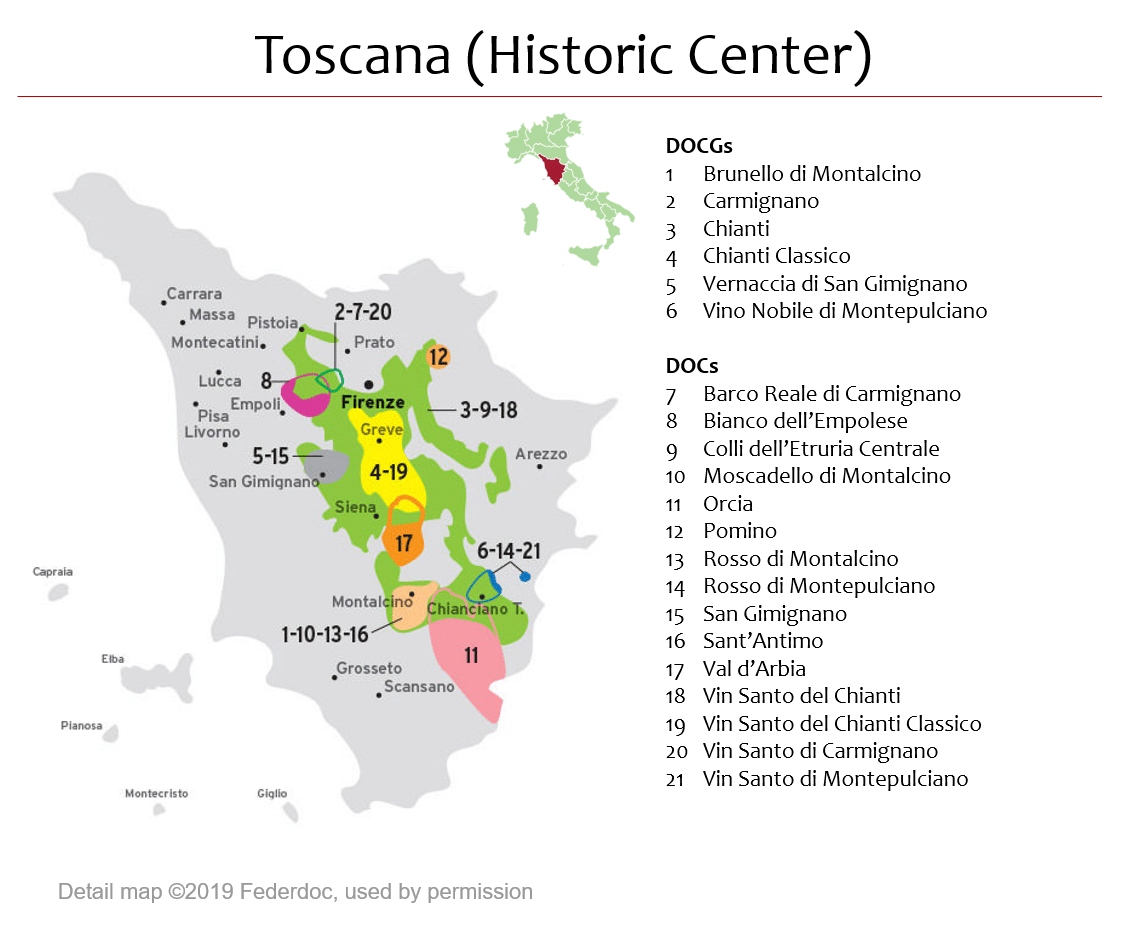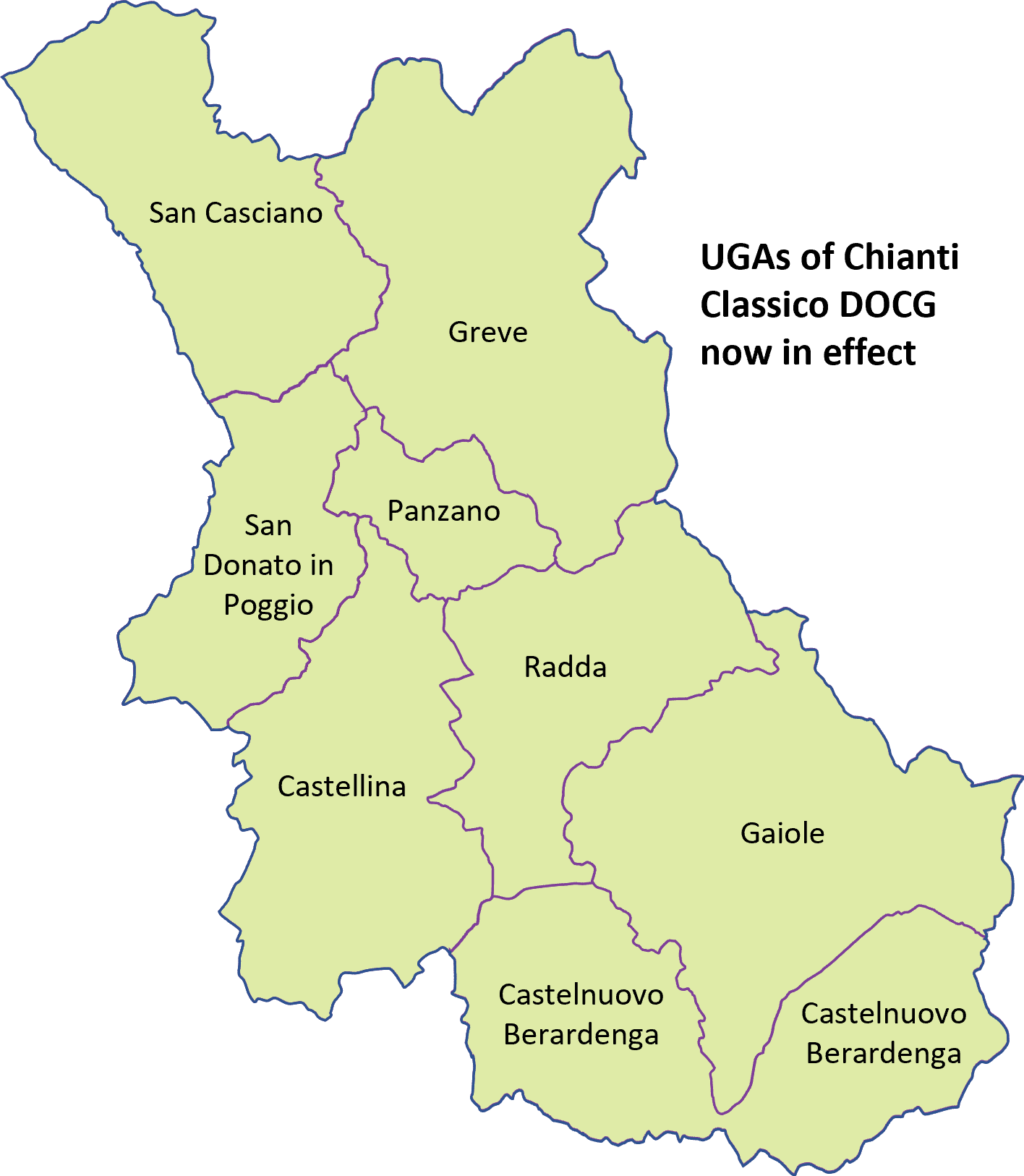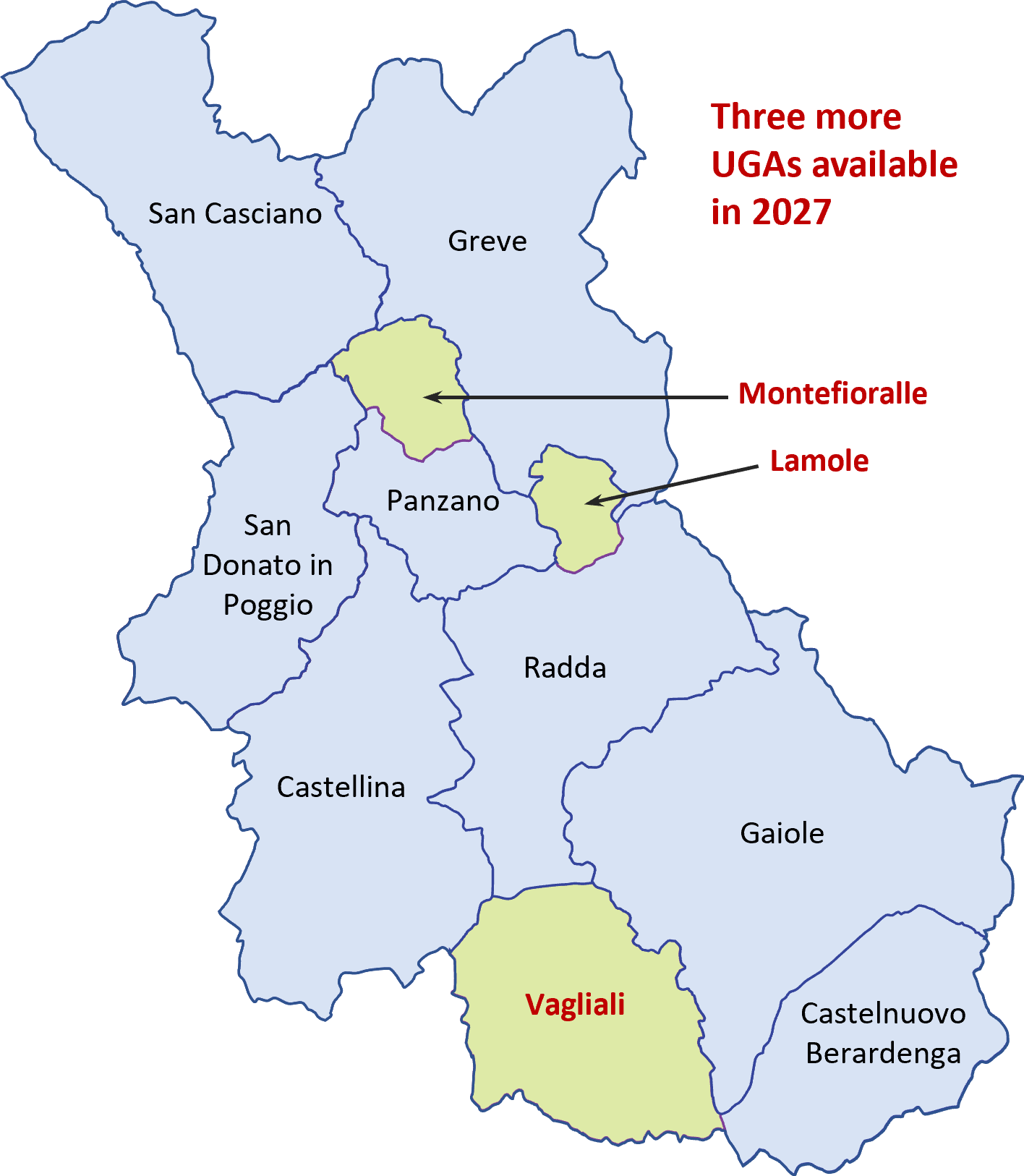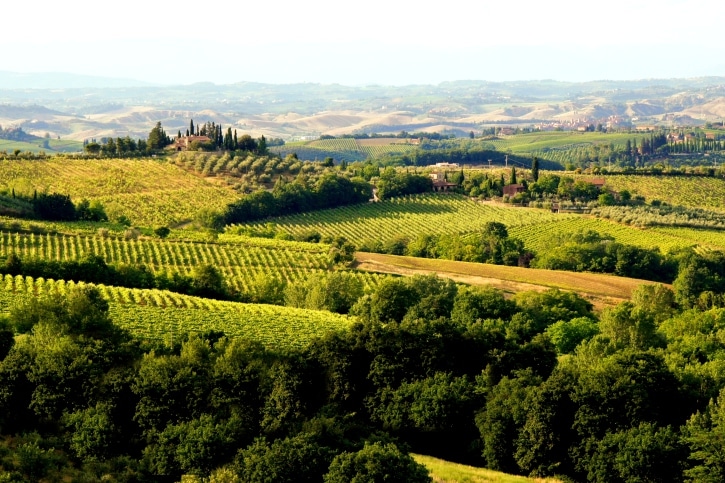Search
Menu
Unitá geografiche aggiuntive (“additional geographical units” or UGAs) for Gran Selezione only:
Note: New quality-promoting standards have been approved for Chianti Classico wines at the Gran Selezione level only, but do not take effect until the 2027 vintage. Under the new rules, Gran Selezione wines will require a minimum of 90% Sangiovese rather than the current 80%. In addition, only eight other native grape varieties can be used in the blend (up to a maximum of 10% total): Canaiolo, Ciliegiolo, Colorino, Foglia Tonda, Malvasia Nera, Mammolo, Pugnitello, and/or Sanforte. Wineries are, of course, allowed to start following these standards before 2027.
Also beginning in 2027, the following UGAs will become effective for Gran Selezione wine labels (including those from earlier vintages that meet the new criteria):




